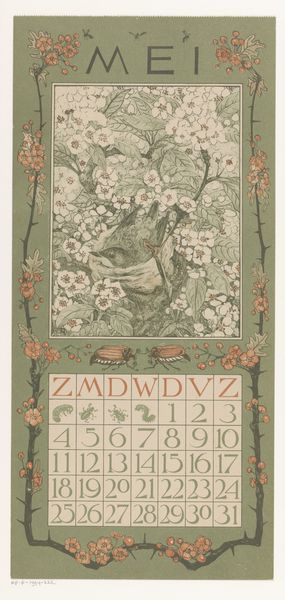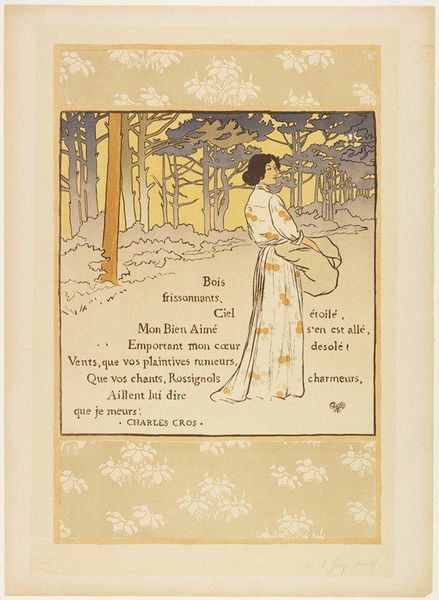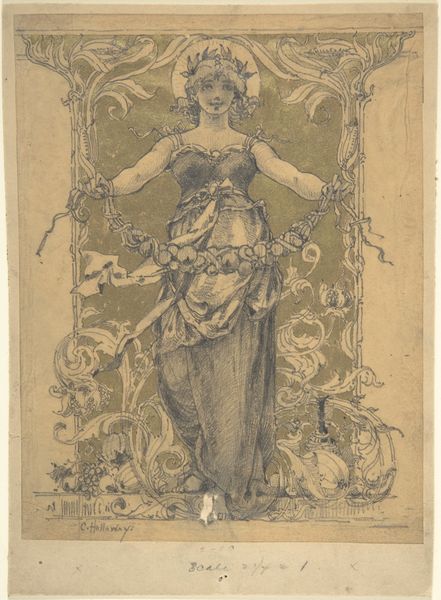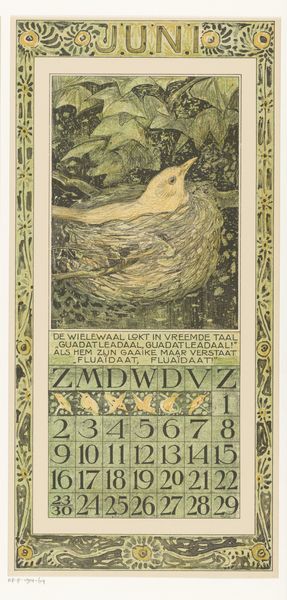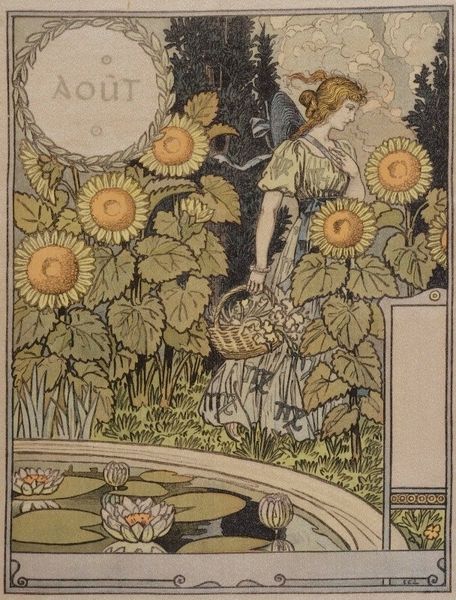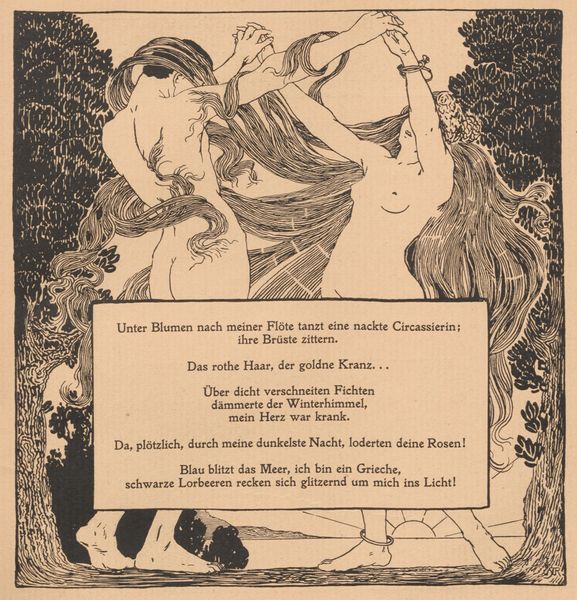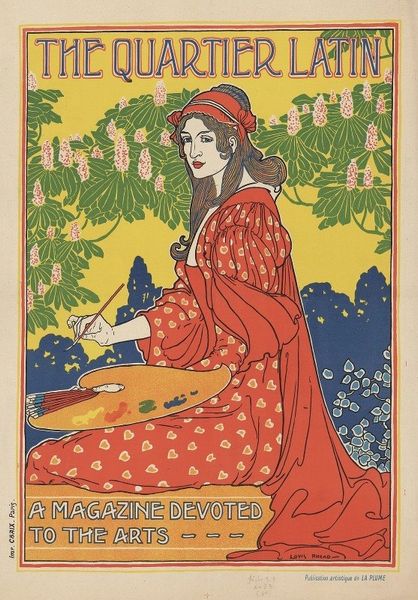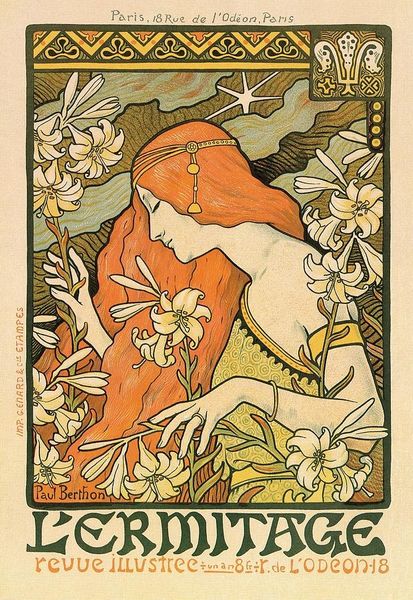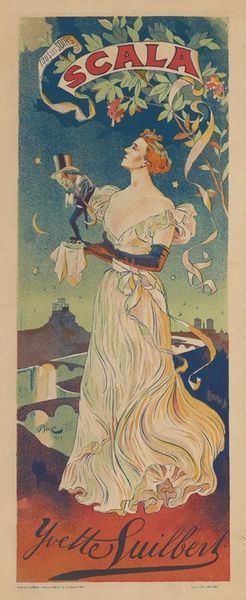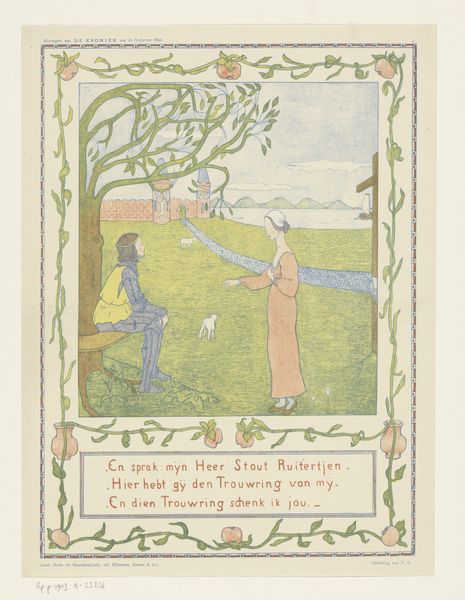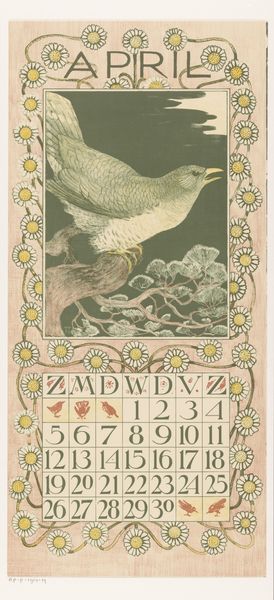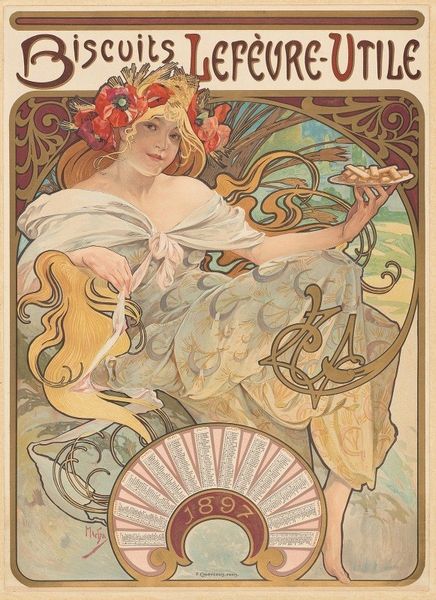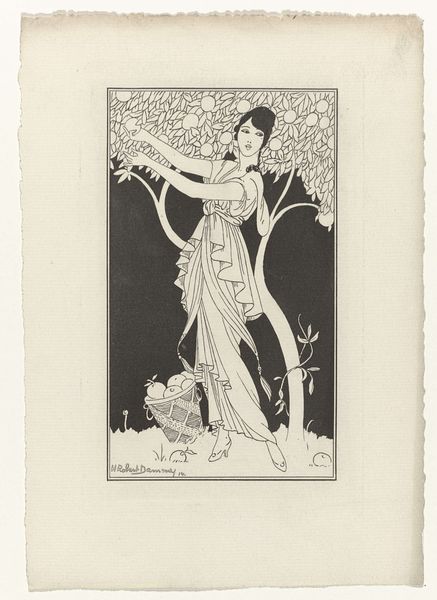
Bestelkaart voor proefexemplaar van 'Het leelijke jonge eendje' 1893
0:00
0:00
drawing, print, paper, woodcut
#
drawing
#
art-nouveau
# print
#
landscape
#
figuration
#
paper
#
woodcut
Dimensions: height 234 mm, width 162 mm
Copyright: Rijks Museum: Open Domain
Curator: Immediately striking is the chromatic restriction here, working solely with shades of black, white, and cream—quite unlike many contemporary approaches. It almost evokes a photographic negative, reversed and abstracted. Editor: It feels inherently linked to folklore. Looking at this 1893 print, “Bestelkaart voor proefexemplaar van 'Het leelijke jonge eendje'” by Theo van Hoytema, I think about accessibility, childhood narratives, and the pervasive themes of identity and acceptance in art, literature, and popular imagination. Curator: A marvelous observation! Now, notice the interplay of positive and negative space – how Hoytema utilizes this binary relationship to create depth and dimension with only a handful of graphic gestures. Observe the staccato strokes defining the reeds and the contrasting curvature of the mother duck’s form. Editor: That's true; it feels less like a serene landscape and more like an invitation for engagement—a call to recognize those displaced, marginalized narratives and to find beauty and belonging even in our differences, considering its direct relationship to Andersen’s text. Is Hoytema making a more general appeal? Curator: Perhaps. Though without resorting to biography, the composition achieves an emotional weight primarily through formal means. The density of the dark elements behind the duck family, in comparison to the open, almost blank space below, evokes feelings of constraint giving way to... what? Potential? Editor: A constraint reflective of prevailing norms around who is considered 'normal,' especially within familial and social environments? It definitely hints at that, which gives the flowers an added resonance—symbols of fragile beauty existing even in unhospitable surroundings. Curator: The detail evident in the maternal figure contrasts beautifully with the broader shapes characterizing her offspring—highlighting perhaps her crucial role as guardian or protector. Ultimately the artwork invites us to confront binary distinctions such as black/white, dark/light—thereby encouraging an epistemological reckoning beyond superficial oppositions. Editor: This small print becomes a profound catalyst for contemplating representation and the persistent power dynamics influencing our perception of ‘us’ and ‘them’. A rather moving meditation indeed.
Comments
No comments
Be the first to comment and join the conversation on the ultimate creative platform.
